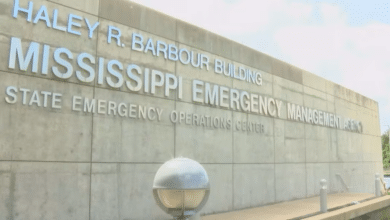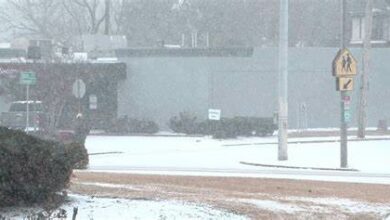Hurricane Ida blasts US Gulf Coast, threatens New Orleans

Miami, Aug 29 (EFE).- Hurricane Ida, one of the most powerful storms ever to strike the continental US, packing winds of 150 miles per hour, on Sunday blasted ashore along the Louisiana coast a region on tenterhooks due to fears that New Orleans could experience a deadly replay of the devastation wrought exactly 16 years ago by Hurricane Katrina.
New Orleans, which finds itself on the northeastern edge of the storm, the most dangerous zone due to the higher winds and increased rainfall normally associated with that portion of Northern Hemisphere hurricanes, is already being battered by Ida, which, according to the National Weather Service, could bring “catastrophic” storm surge, “extreme” winds, flooding and damaging wind gusts throughout the region.
The biggest concern is the levees that protect the city from the waters of Lake Pontchartrain, levees that ruptured in 2005, flooding the low-lying city and leading to the deaths of more than 1,800 people, and Gov. John Bel Edwards said that the area will undergo a “very serious test” in getting through this Category 4 storm.
NWS meteorologist Orlando Bermudez told reporters Sunday in a teleconference that if the forecasts are correct, the storm surge will exceed 16 feet above sea level and this will mean that the water will overflow the levees.
On top of that “critical” situation are forecasts of heavy rain amounting to up to 24 inches in southeastern Louisiana and the coastal areas of Mississippi through Monday, which is considered to be the period of “imminent” danger.
According to the latest NHC advisory at 5 pm Eastern Time on Sunday, Ida’s hora (215 km/h) y se desplaza a 10 millas por hora (17 km/h), but at 6 pm some half a million people in Louisiana were without electric power as a result of the storm.
New Orleans Mayor LaToya Cantrell, who on Friday ordered the obligatory evacuation of people living outside the levee system, said Sunday in the last news conference before the expected arrival of the worst of Ida that the only way to get through the coming hours is for people to remain united.
She said that the community would get through the near term together, adding that local residents should seek shelter immediately and that the multimillion dollar investment in the levee system since 2005 will save the city, despite the fact that Ida is much more powerful a storm than Katrina was at Category 3.
The hurricane force winds brought by Ida extend up to 50 miles from the storm center and it is expected that the eye of the storm will pass just 30 miles west of New Orleans.
The city was already experiencing bands of heavy rain from Ida, which made landfall at 11:55 am near Port Fourchon, through which 18 percent of the US oil supply is shipped, according to figures from the local Chamber of Commerce.
According to the latest available figures, Ida is moving northwest at 10 miles per hour, meaning that the storm center will pass right over – or at least very close to – the city of Baton Rouge, the state capital and second-largest city in Louisiana with about 220,000 residents.
Radar and reconnaissance aircraft data show that the storm’s maximum sustained winds when it made landfall were about 150 mph, according to the Miami-based National Hurricane Center.
The storm thus equals Hurricane Laura, which made landfall on Aug. 27, 2020, very close to where Ida hit on Sunday and where the Last Island hurricane of 1856 also moved onshore, these storms being the strongest storms ever registered in Louisiana.
The latest air pressure reading from the storm before it made landfall was 930 millibars, making Ida one of the most intense storms ever to hit the US, according to figures from the National Oceanic and Atmospheric Administration.
The potential consequences of Ida are devastating, given that Ida’s winds at the time of landfall were just 7 mph shy of a Category 5 storm on the five-point Saffir-Simspon scale.
According to the NHC, houses smacked by a Cat 4 storm can easily lose their roofs and exterior walls, most of the local trees will be knocked over and most of the area blasted by a storm of that strength will be “uninhabitable for weeks or months.”
Given that potential scenario, the governors of Louisiana and Mississippi asked the federal government for an emergency declaration and President Joe Biden granted that request to be able to facilitate the delivery of supplies, personnel and funding to deal with the storm’s impact.
More than 2,400 personnel from the Federal Emergency Management Agency have already been deployed to the region, along with 12 search and rescue teams and about 100 ambulances.
EFE





